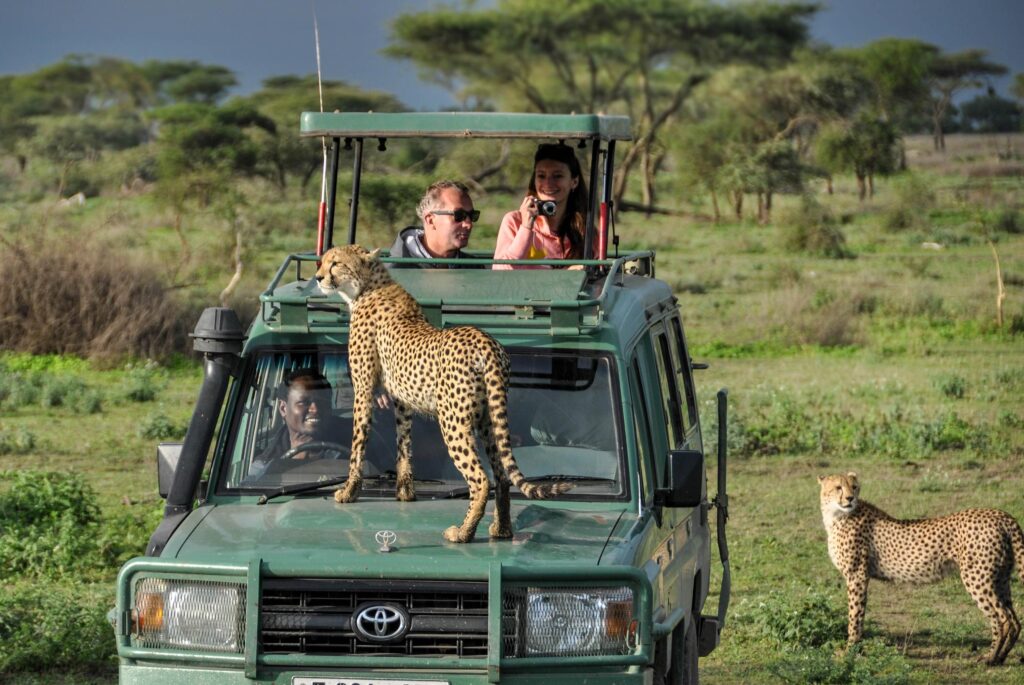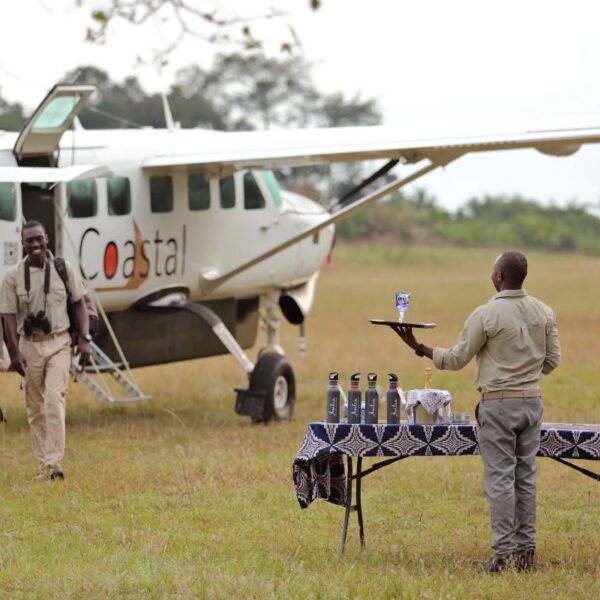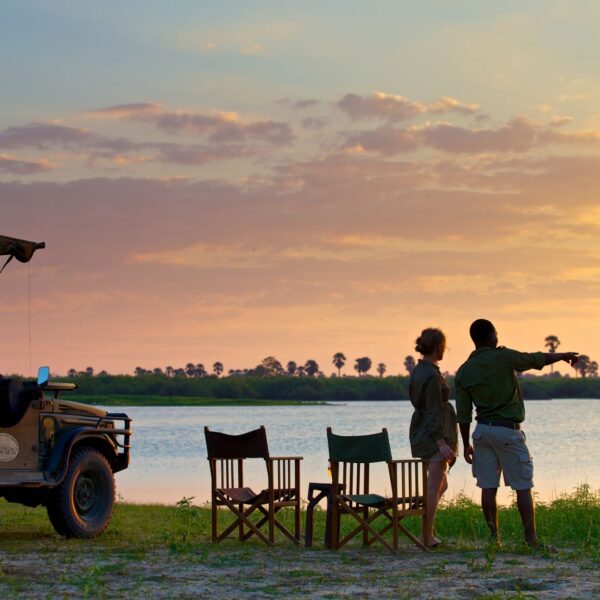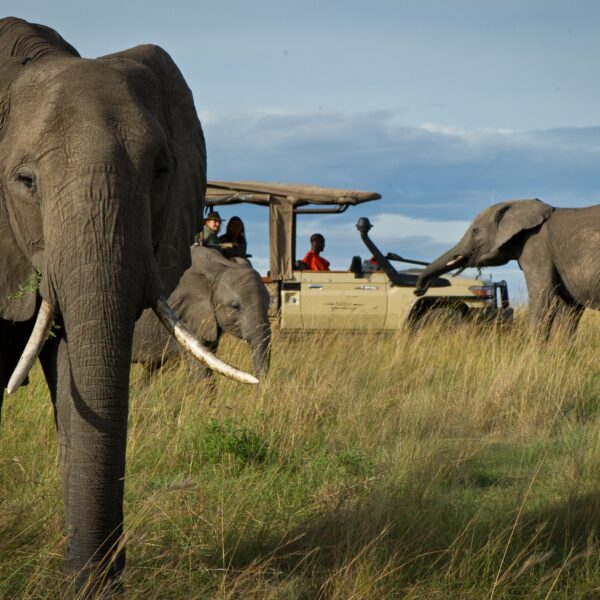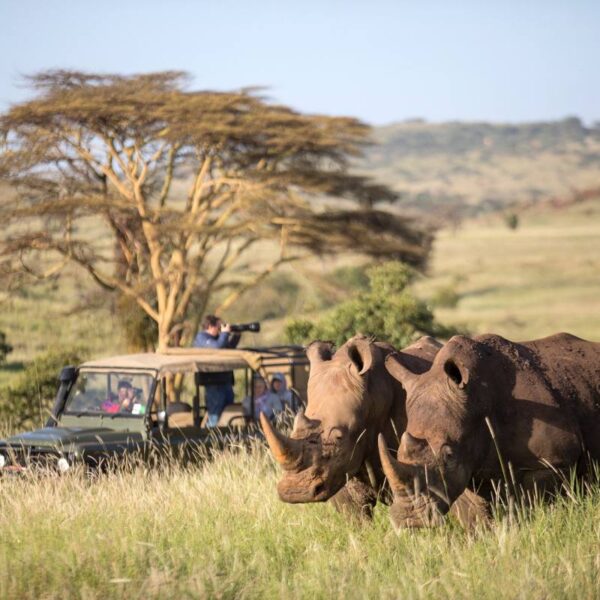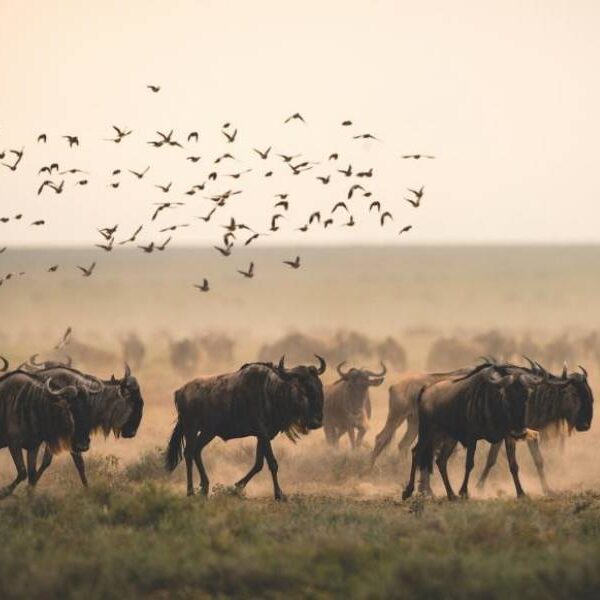Masai Mara National Reserve is the most celebrated and arguably best wildlife reserve in Kenya. The Masai Mara is dominated by open grassland, but as implied by the Masai name Mara, meaning spotted, it is interspersed with rocky hills, acacia woodland and riparian forest. The classic African savannah forms the heart of popular Kenya safaris. Big five viewing in the Masai Mara is practically almost a guarantee. The Mara is home to the biggest density of Wildlife in Kenya.
Masai Mara National Reserve – Kenya
Explore Masai Mara
The Masai Mara can be divided in to three distinct parts. The eastern sector runs southeast from the Mara and Talek Rivers to the Ngama Hills., the central sector lies cupped between the two rivers north of their confluence and the western sector is flanked by the picturesque Oloololo escarpment and the Mara River.
The Mara River which is an important water source and obstacle of the annual Wildebeest Migration are the only permanent waterways that flow through the Masai Mara. Dotted with dozens of deep Hippo pools the Mara river supports a varied aquatic wildlife that includes Hippo, Crocodile and otter along with the riverine birds such as the Hammerkop and African darter. The lush ribbon of riparian forest that follows both rivers for much of their length is densely populated with Leopard, Vervet monkey and bushbuck as well as a selection of birds. This includes the brilliantly colored Schallow’s and Ross Turaco and the melodic white browed robin chat.
One of the most spectacular events in the Serengeti and Mara is the wildebeest Migration and the wildebeest crossing the Mara River. The Wildebeest will often congregate in their thousands on the banks and one of the wildebeest will take the plunge with the rest of the herd following triggering a stampede that provides rich pickings to the waiting crocodiles in the river and predators on the banks of the river. An estimated 5000 wildebeest will perish annually while crossing the Mara River, but the numbers are readily replenished by the average of 400,000 calves born in the Serengeti during the annual Migration Calving Season every January to February. See our Tanzania Migration Calving Safari for more details.
Balloon Safari Mara
A highlight of any visit to the Masai Mara is an early morning balloon safari, which offers the opportunity to have a birds eye view over the plains and their wildlife in their haunting dawn light. During the Wildebeest Migration you also get to glide peacefully over the migrating herds, an exhilarating experience. Your morning balloon safari ends with landing on the open plains followed by an Alfresco champagne breakfast and game drive safari as you drive back to your hotel.
Visiting Masai Mara
- The Masai Mara is located 240 Kilometers form Nairobi
- The average elevation of the Mara is 1700 Meters above sea level.
- It is serviced by different airstrips. Contact us for assistance in locating the best Airstrip for the different accommodation options.
- The flight from Nairobi to Masai Mara takes approximately 45 minutes
- The road to Masai Mara is well paved to the main entrance of the reserve.
- The Wet season in the Masai Mara is between March to April and September and October.
- The best months to witness the Wildebeest Migration is from July to September.
* See out Safari suggestions on different Kenya Tanzania Safaris to the Masai Mara

